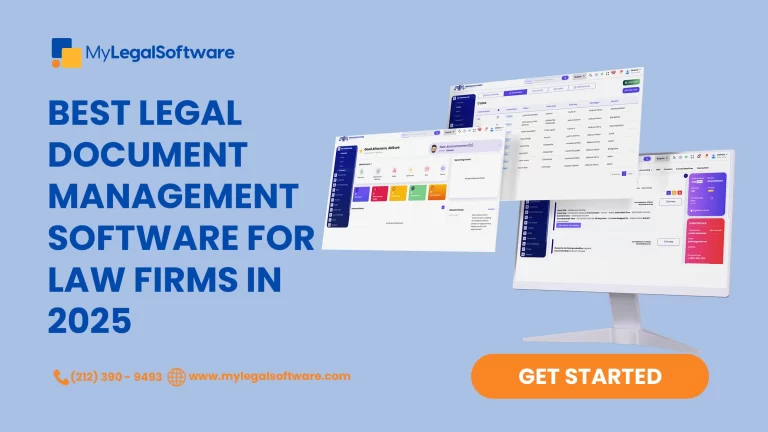Integrating Legal Software with Existing Systems
Running a law firm is no small feat. While it may include practicing law, it goes beyond just that. It involves keeping everything running smoothly behind the scenes. To achieve this, however, you must have all the right tools in place; and as far as modern law firms are concerned, this right tool is legal software.
But here’s the catch: You likely already have some systems in place that your team relies on. So, how do you introduce new legal software without disrupting the flow? The answer lies in integration. Don’t worry, though—it’s not as complicated as it might sound. In fact, integrating new legal software with your existing systems can actually improve the way your firm works, reduce errors, and save a lot of time.
If you’ve been wondering about the best way to incorporate case management software into your practice, you’re in the right place. Let’s explore how integrating legal software can benefit your law firm, the best ways to make it work, and how you can start improving your workflow right now.
Why Should You Care About Integrating Legal Software?
- Making Your Systems Work Together
Imagine if your case management software could communicate directly with your billing software, document management tools, and even your email system. No more entering the same data in multiple places or trying to track down the information you need. That’s the power of integration.
When you integrate your legal software with existing systems, you ensure that everything works together smoothly. This means no more switching between platforms, saving you time, and making sure the data is consistent across the board. From case updates to client records, everything syncs seamlessly, keeping your team on the same page.
Optimizing Your Workflow
Time is money, and in a law firm, every minute counts. By integrating your systems, you can automate routine tasks and eliminate unnecessary steps. For example, if you link your case management software with your document management system, important case files can be automatically added to your client’s file. No more searching for documents or entering information manually. This saves you and your team a lot of time—and that time can be better spent on client work.
In short, integrating legal software helps streamline workflows, reduces bottlenecks, and makes your team more efficient.
Automating Data Migration
Data migration—the process of moving data from one system to another—can be a headache, especially when dealing with sensitive client information. The good news is that when you integrate legal software, data migration can be automated. Instead of manually transferring hundreds (or thousands) of records, the software takes care of it for you, ensuring that everything is transferred accurately and without any hiccups.
Whether you’re upgrading your current system or moving to a new one, automated data migration minimizes the risk of data loss and errors, helping you transition smoothly.
Different Types of Legal Software Integrations
Now that we’ve established why integration is important, let’s look at how it can be implemented. There are several types of legal software integrations that can help you level up your firm’s operations.
API Integration: The Power of Seamless Connections
API integration might sound technical, but it’s essentially the bridge that connects different software systems, allowing them to share data and communicate. For example, your case management system can be integrated with a time tracking app, automatically logging hours worked on each case. You can also integrate your billing software with your document management system, so invoices are populated automatically from the case files.
With API integration, your systems become interconnected, meaning less manual entry and a much smoother workflow.
Document Management and E-Signatures
Documents are a core part of any legal practice and managing them efficiently is key. Integrating your legal software with document management systems makes it easier to store, organize, and retrieve important case files. You can also integrate e-signature tools to automate document signing. This means no more printing, scanning, or waiting for clients to send signed papers back. Everything is done electronically, reducing delays and enhancing client experience.
Time and Billing Integration
Let’s face it—billing can be one of the most time-consuming parts of legal work. But when you integrate your case management software with your time and billing systems, things get much easier. You won’t need to manually log time entries or transfer data between systems. Instead, your software will automatically sync time worked on cases and populate invoices for you.
This not only improves accuracy but also frees up time that your team can spend on other important tasks. Plus, clients will appreciate getting accurate and timely bills, without any mistakes.
CRM Integration for Stronger Client Relationships
Building and maintaining relationships with clients is what sets your firm apart. By integrating your case management software with a customer relationship management (CRM) tool, you can keep track of every interaction with your clients. Whether it’s scheduling a follow-up call or sending out a quick update, CRM integration ensures that your team has everything they need to provide a personal and professional experience.
Plus, you can automate follow-ups and reminders, ensuring that nothing falls through the cracks.
Overcoming Challenges in Integrating Legal Software
We’re not going to sugar coat it—integrating legal software can come with its challenges. But don’t worry, with a little planning and the right support, these hurdles are totally manageable.
Concerns About Data Security
Data security is always a top priority, especially when it comes to client information. When migrating data or integrating new software, it’s important to ensure that the process adheres to strict security standards. Look for legal software providers who offer secure cloud storage and encryption to protect your data.
Additionally, make sure that your team is trained on best practices for handling sensitive information. This will help protect both your clients and your firm.
Customization: Tailoring to Your Needs
Every law firm is different, and so are their needs. The good news is that many legal software solutions are customizable. Whether you need specific workflows, custom fields, or reports tailored to your practice, there are integration options that can be adapted to your firm’s unique requirements.
Before you start, make sure the software provider you choose offers enough flexibility to meet your needs.
Training and Support
The last thing you want is to integrate new software and have your team struggle with using it. That’s why training is important. Look for legal software providers that offer comprehensive training and ongoing support. This way, you can ensure that your team is comfortable using the system and will be able to take full advantage of its features.
The Future of Legal Software Integration
As technology advances, so do the opportunities for better Integrating Legal Software. With AI, machine learning, and automation making their way into the legal industry, the ability to integrate your legal software with other tools will only become more powerful. In the future, we can expect even more sophisticated integrations that help improve accuracy, reduce manual tasks, and further optimize your workflows.
Conclusion
Integrating legal software into your practice isn’t just about adopting new tools—it’s about making your systems work better together and boosting your overall efficiency. From improving system compatibility to streamlining workflows and automating data migration, integrating legal software is a smart investment for any law firm.
So, what are you waiting for? If you’re ready to make your firm’s operations smoother and more efficient, visit My Legal Software today and find the perfect solution for your practice.
Want to learn about the top features to look for in legal management software? Go here.
Frequently Asked Questions – Integrating Legal Software
- What is API integration, and why is it important for legal software?
API integration connects different software systems, allowing them to share data and work together seamlessly. For legal software, this means your case management, billing, and document management systems can communicate, automating tasks and improving efficiency.
- How can I automate data migration when switching legal software?
Data migration can be automated using tools provided by legal software vendors. These tools ensure that your data, including client details and case files, are transferred smoothly between systems without manual input, reducing the risk of errors.
How can legal software integration improve my firm’s workflow?
By integrating your legal software with your existing systems, you can automate routine tasks, improve communication between different tools, and eliminate manual data entry. This streamlines your processes, reduces errors, and saves time, allowing your team to focus on what matters most—your clients.








